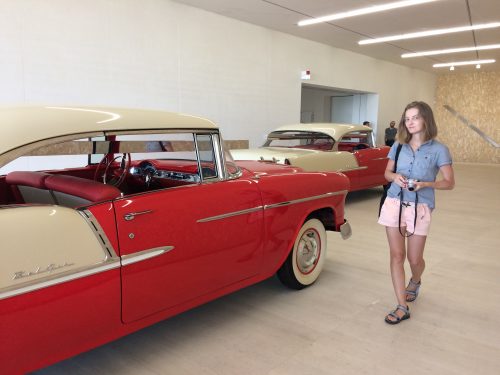 In advertisement design for cars is on the top all the time, the truth is that art has also been important to it. Sometimes it has objective representations, like on a new logotype or color, but there are also several other cases where it takes an abstract, almost transcendental way.
In advertisement design for cars is on the top all the time, the truth is that art has also been important to it. Sometimes it has objective representations, like on a new logotype or color, but there are also several other cases where it takes an abstract, almost transcendental way.
In short, a car which appearance was changed in a way to suit the artist’s own aesthetic, desires, and personality. As mentioned earlier, this situation poses a notable contrast because cars are frequently associated with design; everything in them is planned and executed to serve commercial purposes, even its visual identity and style-related parts.
Cars have become a big part of our lives; we interact with them every day and many decisions are influenced by them regardless of whether we actually own one. Art is an invaluable form of self-expression, so it was just a matter of time for people to start applying it to cars.
Art cars made by well known artists of other types, people who became famous artists because of art cars, and countless amators who have made their own art cars as well. People who engage in this type of creation are often referred to as car artists or, more informally, cartists.
As you can imagine, people have used a wide number of themes to make their art cars. Some represent the artist’s culture, others send a message regarding the current social context, and others simply materialize their author’s point of view.
Art cars prove that even such rational and precise products can be enhanced by the sensitivity and the power of self-expression.
Visiting Prada foundation several years ago we saw the floor with Walter De Maria’s artwork with cars and his well known minimalist iron bars (triangle, circle, square).
He has connected own minimalistic stainless steel sculptures with famous model of Chevrolet Bel Air two-tone hardtop classic cars.
Trilogies—installations that explore the conceptual, the monumental, the minimal, and the real − expresses some of the defining features of Walter De Maria’s work.
Location: Prada foundation, Milan, Italy
 The anti-painting of Joan Miró is not an actual technique as it is more of a statement. He didn’t mean to violate or to deconstruct the norms and traditions of painting, but rather to remove all sacred qualities and status of the artistic work. It began with his claim:
The anti-painting of Joan Miró is not an actual technique as it is more of a statement. He didn’t mean to violate or to deconstruct the norms and traditions of painting, but rather to remove all sacred qualities and status of the artistic work. It began with his claim: